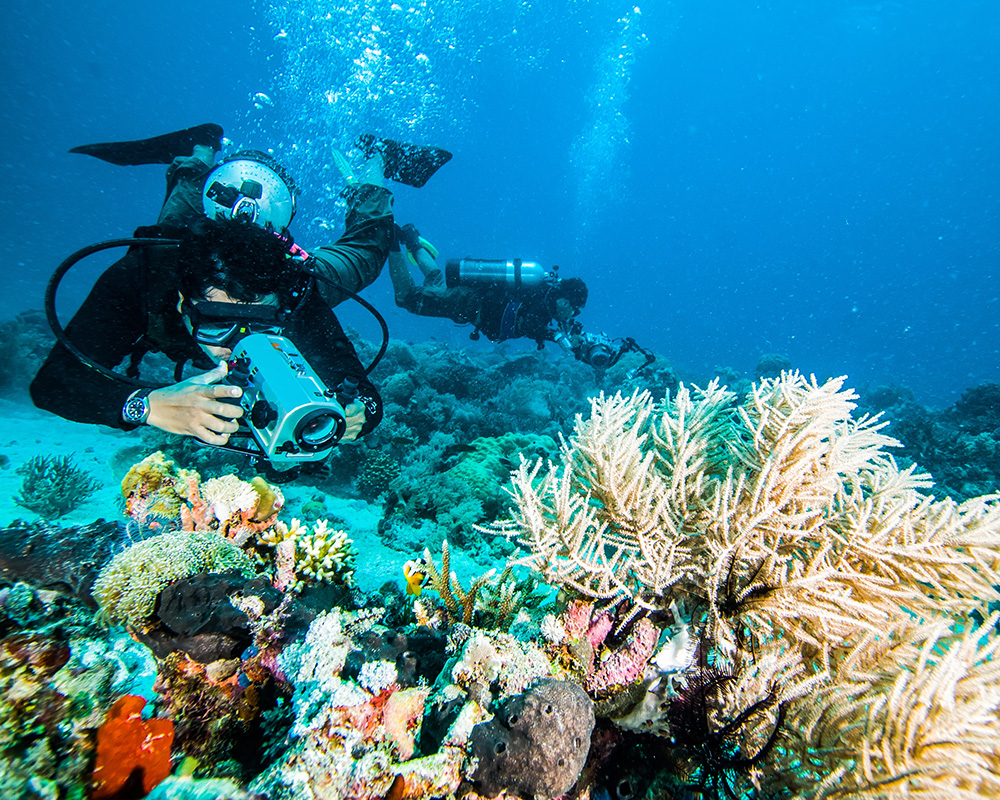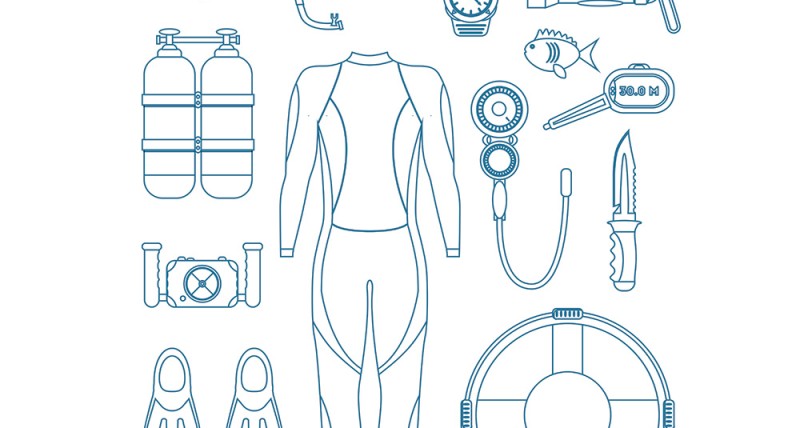Blend purposeful exploration with refined comfort and come home knowing you made the ocean tangibly healthier.
Introduction: Beyond Sightseeing, Toward Stewardship
It’s one thing to glide over a coral archway and admire a school of grunts backlit by sunbeams. It’s quite another to help secure that archway’s future—tagging coral fragments, logging fish biomass, or planting mangrove saplings between morning dives and sunset paddle sessions. Citizen-science dive expeditions let you do exactly that, pairing well-appointed vessels, attentive crew, and respected marine-biology teams with hands-on conservation tasks designed for motivated divers. You enjoy spacious cabins, chef-prepared meals, and small dive groups — but you also roll up your sleeves (or wetsuit cuffs) to collect data that guides reef-management decisions for years to come.
The best part? No advanced degree or grueling field camp required. If you can maintain neutral buoyancy and follow a slate of clear protocols, you can contribute meaningfully while still enjoying the creature comforts that make time off feel restorative. The following guide maps out how these trips work, what projects you can join, and how to prepare so you step aboard ready to make every descent count.
1. Citizen Science 101: Turning Passion Into Data
Citizen science is structured volunteer work that fills gaps professional researchers can’t cover alone. Marine ecosystems shift daily across thousands of square miles, so agencies and universities rely on trained travelers to gather broad, repeatable observations.
Key principles
Standardized methods – You’ll follow simple, scripted tasks (e.g., 50-meter belt transects, fixed-point photo stations) so your data aligns with global databases.
Quality control – Expedition leaders validate each slate, photo, or sample before submission, ensuring it meets publication standards.
Long-term monitoring – Because projects revisit the same sites annually or even quarterly, your contribution becomes a puzzle piece in decadal trend lines.
For divers, the bonus is obvious: you sharpen navigation, buoyancy, and situational awareness while doing something genuinely meaningful.
2. Vessels and Resorts That Cater to Citizen Scientists
Not every liveaboard or beach lodge is set up for research. The outfits below (and those like them) blend comfort with lab-bench practicality:
| Provider Type | What Sets Them Apart |
|---|---|
| Research-Ready Liveaboards | Have wet labs with microscopes, freezer space for plankton samples, and shaded worktables on deck. Cabins feature ensuite baths, Wi-Fi hotspots, and memory-foam mattresses. |
| Eco-Focused Island Lodges | Limit guest numbers to preserve quiet reefs, power property via solar microgrids, and provide on-site classrooms for nightly briefings. |
| Hybrid Sail-Dives | Rigged schooners or catamarans offer silent propulsion under sail, lowering fuel use and letting you hear dolphins well before you spot them. These boats carry portable compressors and compact ROVs for deeper photogrammetry work. |
Regardless of format, staff ratios hover around one marine biologist per 6–8 guests, ensuring every volunteer receives clear guidance and feedback.
3. Conservation Projects You Can Join
3.1 Coral-Nursery Maintenance
Goal: Restore damaged reefs by rearing resilient coral strains on PVC “trees” before out-planting.
Your Tasks: Remove algal overgrowth, re-epoxy fragments, measure branch growth with calipers.
Skills Sharpened: Static hovering, fine fin-tip adjustments, gentle tool use in gloves.
3.2 Reef Fish & Invertebrate Surveys
Goal: Track biodiversity, biomass, and indicator-species abundance.
Your Tasks: Swim fixed patterns while tallying species on waterproof slates or voice recorders.
Skills Sharpened: Buoyancy while multitasking, quick species recognition, underwater situational awareness.
3.3 Manta and Whale-Shark Identification
Goal: Catalog individual animals by spot patterns or scars for migration studies.
Your Tasks: Photograph ventral surfaces, log GPS coordinates and behavior notes.
Skills Sharpened: Slow approach techniques, animal-interaction etiquette, wide-angle photography.
3.4 Microplastic & Plankton Sampling
Goal: Assess microplastic density relative to zooplankton in blue-water columns.
Your Tasks: Deploy fine-mesh nets at set depths, rinse samples into labeled jars, process in deck lab.
Skills Sharpened: Lift-bag handling, teamwork on delicate equipment, basic lab technique.
Choose a project that resonates with your interests—whether you’re fascinated by megafauna or passionate about tiny polyps that build entire reef cities.
4. Preparing Your Skills and Gear
4.1 Certification Checklist
| Skill Area | Suggested Training | Why It Helps |
|---|---|---|
| Buoyancy Mastery | Peak Performance Buoyancy or Advanced Open Water | Minimizes fin kicks near fragile corals. |
| Gas Planning | Nitrox / Enriched-Air | Adds bottom time for lengthy survey lanes. |
| Navigation | Underwater Navigator Specialty | Keeps belt-transect lines straight and repeatable. |
| Photogrammetry | Digital Underwater Photography | Ensures ID photos have proper framing and contrast. |
4.2 Gear Essentials
Computer with Bottom-Timer Mode – Needed for consistent depth holds during transects.
Slate & Pencil – Rugged, pre-strung with bungee. Many expeditions provide a template, but having a personal slate speeds note-taking.
Reef-Safe Sunscreen & Long-Sleeve Lycra – Protect both skin and coral polyps from harmful compounds.
Neutral-Trim BCD and Compact Weights – Interchangeable pockets let you fine-tune trim as you swap steel for aluminum cylinders.
Camera Rig – If participating in ID projects, bring a mirrorless body in a sealed housing or a high-resolution action cam with red filter.
Label everything with your initials; gear often sits side-by-side on benches, and volunteers may run similar setups.
5. A Day in the Life Aboard a Citizen-Science Voyage
| Time | Activity | Details |
|---|---|---|
| 06:30 | Coffee & Light Breakfast | Crew posts weather forecast and dive plan on whiteboard. |
| 07:30 | First Dive – Data Collection | Teams split: coral crew heads to “nursery garden,” fish survey crew follows a predetermined grid. |
| 09:30 | Debrief & Snack | Biologist checks slates, enters preliminary data into tablet while guests sip smoothies. |
| 11:00 | Second Dive – Out-Planting | Volunteers plant mature coral fragments onto pre-drilled limestone using two-part epoxy. |
| 13:00 | Lunch & Surface Break | Hammock time on sun deck or quick snorkel with resident turtles. |
| 15:30 | Third Dive – Recreational | Non-task dive to explore a nearby cavern or drift wall, cameras encouraged. |
| 17:00 | Lab Session | Participants micro-scope plankton samples, logging microplastic counts. |
| 19:00 | Dinner | Galley serves locally sourced seafood, vegetarian options, fresh-baked desserts. |
| 20:30 | Evening Briefing | Presentation on how today’s numbers feed regional reef-health indices; Q&A, followed by stargazing on bow nets. |
Days balance focused conservation work with restorative downtime and exploration, maintaining enthusiasm without burnout.
6. Measuring Your Impact
Organizations make sure volunteers know exactly where their effort lands:
Annual Reports – Email updates show how your coral fragments grew or how your fish counts flagged new no-take zones.
GIS Dashboards – Interactive maps let you click your out-planted polygons and follow survival stats in near real time.
Peer-Reviewed Papers – Some crews receive early-release PDFs acknowledging volunteer data sets.
Community Outreach – Footage and findings feed into local school programs and tourism boards, enriching broader stewardship.
Seeing a coral tree you cleaned reappear in a “two-year growth” time-lapse is deeply satisfying—proof your vacation delivered more than photographs.
7. How to Select the Right Expedition
7.1 Vet Scientific Credibility
Check for partnerships with recognized NGOs (e.g., Coral Restoration Foundation, Reef Check).
Ask for permit numbers issued by local authorities—serious operators readily provide them.
Look for project descriptions that mention data repositories or publication pipelines.
7.2 Match Comfort Expectations
Cabins: verify sizes, ventilation, and whether ensuite baths are standard.
Diver-to-guide ratio: 4:1 or fewer keeps tasks clear and calm.
Culinary preferences: share dietary needs early—boats stock supplies weeks in advance.
7.3 Balance Work and Play
A program requiring four daily survey dives might thrill avid data junkies but overwhelm casual snorkelers. Select itineraries that schedule at least one purely recreational dive per day so everyone feels fulfilled.
8. Extending Your Contribution After Disembarkation
Data-Upload Continuation – Many ID projects allow alumni to submit photos shot on subsequent personal trips.
Fundraising Ambassadors – Host slide shows at yacht clubs or community centers; a single evening can underwrite hundreds of nursery fragments.
Corporate Matching – If your workplace matches charitable donations, channel funds toward gear purchases for local science teams.
Gear Donation – Sturdy backup regulators or underwater housings gather dust at home but become prized tools for small coastal NGOs.
Travel Choices – Revisit expedition partners on future vacations, proving that responsible operations can thrive commercially.
Sustained involvement turns a one-off adventure into a long-term relationship with reefs you learn to recognize like neighborhood landmarks.
9. Frequently Asked Questions
| Question | Short Answer |
|---|---|
| Do I need advanced diving credentials? | Most trips accept Open Water divers with 30–50 logged dives; some specialty tasks require Advanced Open Water or Rescue Diver. |
| Will conservation work shorten my fun dive time? | You still rack up bottom minutes—survey lanes, coral nurseries, and out-plants happen underwater. Plus, itineraries usually include at least one “camera-only” dive daily. |
| Is the data really useful? | Absolutely. Volunteer-collected metrics feed national marine-park quotas, species-protection status, and climate-resilience studies. |
| What about dive insurance? | Standard policies cover these trips. Confirm you’re insured for scientific tasks (most carriers view them like normal dives). |
| Can non-divers join? | Yes—surface teams handle plankton sorting, turtle-nest patrols, or beach-plastic audits; they often snorkel during dive windows. |
10. Crafting Your Citizen-Science Adventure: A Step-By-Step Plan
Identify Conservation Themes You Feel Deeply About – Reef regeneration, megafauna tracking, plastic mitigation—passion sustains energy on long days.
Pick Timing That Aligns With Project Cycles – Coral spawning, whale-shark aggregations, or manta-cleaning seasons.
Lock in the Vessel or Lodge – Reserve early; small group sizes mean popular sailings fill up months ahead.
Complete E-Learning Modules – Many programs send digital field manuals and fish ID guides; start studying en route.
Tune Equipment – Service regulators, update camera housings, and pack spare O-rings, fin straps, and reef-safe toiletries.
Set a Fitness Baseline – Gentle yoga or core workouts improve trim; moderate cardio preps you for repetitive dives.
Plan a Giving Budget – Even modest donations fund replacement nursery frames or fuel for patrol boats.
Tell Your Story – Blog, podcast, or photo essay upon return; personal narratives spark the next wave of citizen scientists.
Conclusion: Dive Deeper, Leave More Behind Than Bubbles
Citizen-science expeditions prove travel can be both indulgent and impactful—where plush linens and fresh-pressed juice pair seamlessly with transect tapes and epoxy guns. Instead of watching reefs fade, you become part of the solution, planting resilience one coral nubbin at a time or logging manta encounters that redirect shipping lanes. Every fin kick serves twin purposes: personal wonder and collective stewardship.
If your next getaway list already includes clear water, vibrant reefs, and good company, why not fold in a chance to shape the future of those reefs? Reach out for a personalized expedition match, skill-building advice, or gear-selection tips. The ocean is ready for informed hands; the only question is whether yours will be among them on the next survey slate. Dive in, give back, and surface knowing your vacation story is also a conservation success story.




